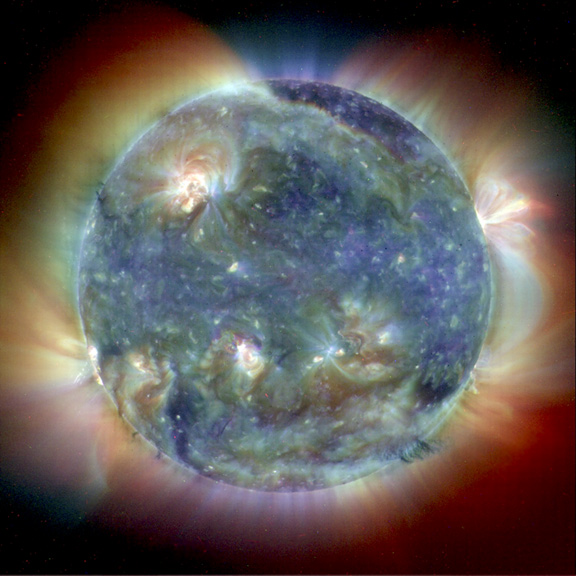The coronal heating problem
Thesis defense:
The coronal heating problem

Boris V. Gudiksen
Institute for solar
physics
of
The Royal Swedish Academy of Sciences
Stockholm Observatory
Albanova
Roslagstullsbacken 21
March 5. 2004 at 13.00
Room B52
Abstract: The heating of the solar corona has been investigated for several
decades and a large number of models theoretically able to produce
the right amount of heating has been constructed. It has not been
possible to produce quantitative evidence that would establish any of
them as the most important heating mechanism at work in the solar
corona. This thesis is an attempt to produce the crucial quantitative
estimate of the heating.
The heating problem is approached 'ab initio', using well
observed facts and including realistic physics in a 3D magneto
hydrodynamic simulation of a small part of the solar atmosphere. The
'engine' of the heating mechanism is the solar photospheric velocity
field that braids the magnetic field into a configuration where energy
has to be dissipated. The initial magnetic field is taken from an
observation of a typical magnetic active region scaled down to fit
inside the computational domain. The driving velocity field is
generated by a mechanism reproducing the statistical and geometrical
fingerprint of the solar granulation. Using a standard model
atmosphere as the thermal initial condition, the model goes through a short
start up phase where the initial thermal stratification is
quickly forgotten and then enters statistical equilibrium. The
magnetic field is able to dissipate the same amount of energy as is
estimated to be lost from the solar corona through radiation, believed
to be the main energy loss mechanism for the plasma in the solar corona.
The observed characteristics of the heating are reproduced as well as a
coronal temperature of roughly one million K. Because of the ab initio
approach, the amount of heating produced is a minimum and unavoidable.
See also the university announcement including download possibility.

